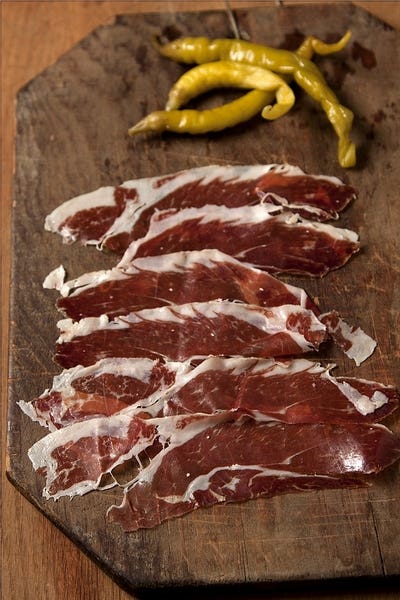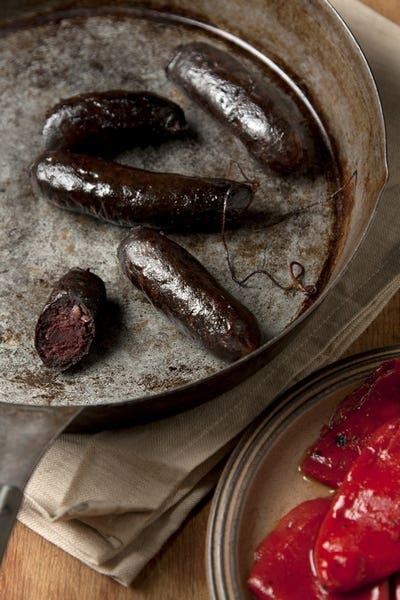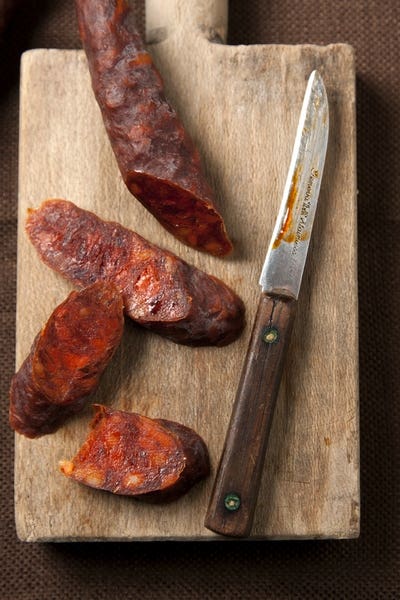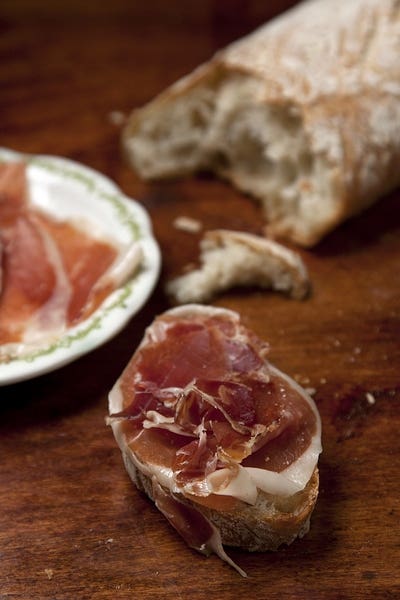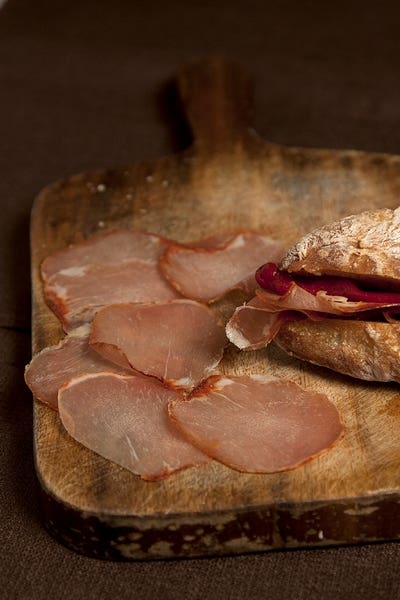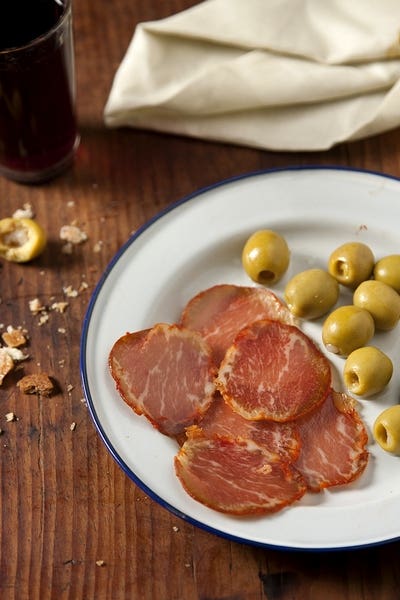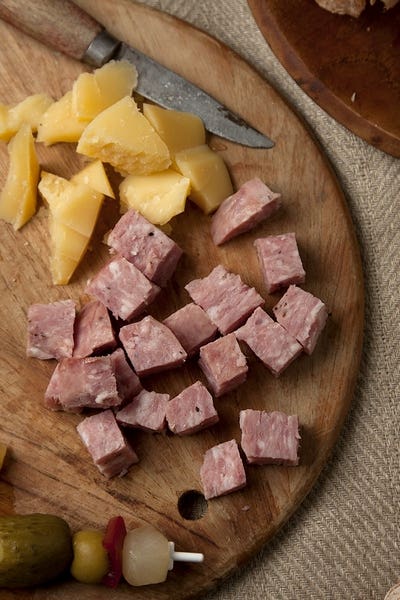
A Guide to Spanish Cured Meats
The sausages and cured meats that Spain produces are a testament to the edible magic that results when a pig meets spices and a little bit of curing time.
Jamon Iberico de Bellota
Rare, expensive, and extraordinary, this ham made from the hocks of pata negra pigs has only recently become available in the United States. (Legally, that is — for many travelers to Spain, smuggling jamon iberico home through customs was an essential part of the trip.) The robust, funky meat — streaked with sweet, nutty fat — gets its characteristic flavor from a combination of the pigs’ all-acorn diet, and their moderately active life roaming free-range through oak forests on the Spain-Portugal border.
Morcilla
Spain’s blood sausage earned its reputation as one of the most accessible black puddings thanks to the inclusion of a starchy filler, most commonly rice, which mimics the mouthfeel of a traditional meat sausage. The pork blood is flavored with garlic, onion, and pimenton; when sliced and fried in olive oil, the edges crisp up in a rich textural counterpoint to the soft interior.
Chorizo
Spain’s most famous sausage is also its least consistent: “chorizo” is a catchall term that encompasses virtually any sausage made from ground pork mixed with a generous dose of either sweet or spicy pimenton. Everything else — the coarseness of the grind; sausage length, width, density and curing time; any additional ingredients — can vary tremendously from region to region and kitchen to kitchen. The most popular version is a lean, dry, austere sausage made from pork, pimenton, and salt; it’s equally tasty sliced and paired with cheese, or chopped and fried in olive oil, served with bread for sopping up the spicy, flavorful drippings.
Jamon Serrano
The renowned Spanish take on prosciutto — a dry-cured ham that’s sliced thin enough for the soft fat to melt on the tongue — cures in salt for two weeks, and then is stored in towering piles for upwards of two months. The resulting ham, flat and dense from the pressure of being stacked, is sweet and fatty. Enhance the experience by bringing out acidic accompaniments like peppers, membrillo (quince paste), or a crisp, fruity glass of sangria.
Considered one of the finest forms of Spanish charcuterie, lomo embuchado — a dry-cured pork tenderloin dusted with pimenton, wrapped, and set to cure for two months or more — is meaty, lean, and intensely flavorful. Served sliced thin to enhance the enjoyably chewy texture, it’s at its best paired with something fruity, fatty, or both: drizzled with olive oil, or eaten in the same bite as an olive or piquillo pepper.
Butifarra
This Catalonian boiled sausage of fine-ground lean pork is similar in taste and texture to American soft salami, but with a garlicky kick that puts it right at home against other vivid flavors: pickles, sharp cheeses, and spicy peppers are perfect pairs. Slice it in rounds and put it on bread, or simply chop it into bite-sized pieces and nibble it on its own.
Keep Reading
Continue to Next Story
